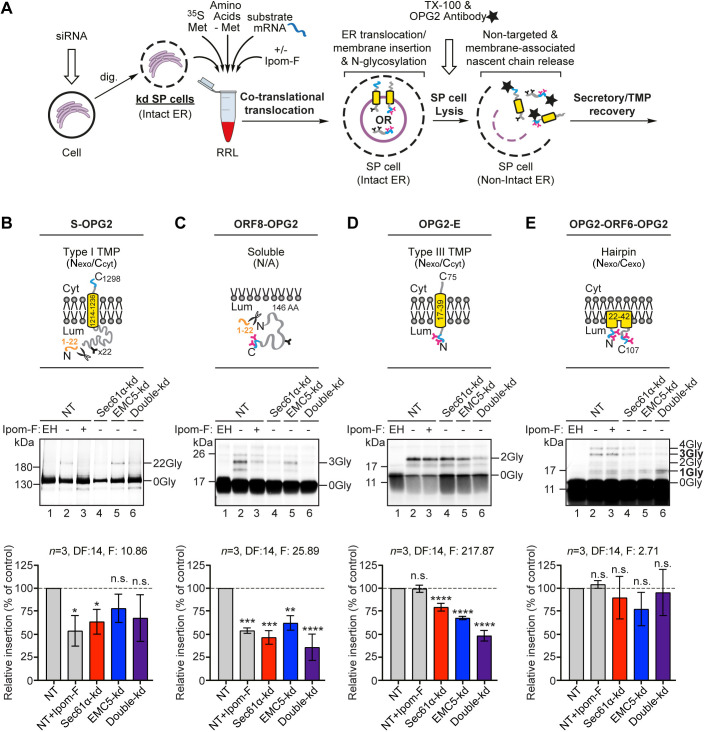Fig. 3.
SARS-CoV-2 proteins are variably dependent on the Sec61 complex and/or the EMC for ER membrane translocation or insertion. (A) Schematic of in vitro ER import assay using control SP cells, or those depleted of a subunit of the Sec61 complex and/or the EMC via siRNA treatment. Following translation, OPG2-tagged translation products (i.e. membrane-associated and non-targeted nascent chains) were immunoprecipitated, resolved by SDS–PAGE and analysed by phosphorimaging. OPG2-tagged variants of the SARS-CoV-2 (B) spike (S–OPG2), (C) ORF8 (ORF8–OPG2), (D) envelope (OPG2–E) and (E) ORF6 (OPG2–ORF6–OPG2) species (labelled as for Fig. 2) were synthesised in rabbit reticulocyte lysate (RRL) supplemented with control SP cells (lanes 1,2) or SP cells with impaired Sec61 and/or EMC function (lanes 3–6). Radiolabelled products were recovered and analysed as in A. Membrane translocation/insertion efficiency was determined using the ratio of the N-glycosylation of lumenal domains, identified using Endo H (EH, lane 1), relative to the non-targeting (NT) control (set to 100% translocation/insertion efficiency; dashed lines). Quantitations (mean±s.e.m.; n=3) and statistical significance (two-way ANOVA, DF and F values shown in the figure) determined as for Fig. 2. ****P<0.0001; ***P<0.001; **P<0.01; *P<0.05; n.s., non-significant P>0.1. AA, amino acids; dig., digitonin; kd, knockdown; TX-100, triton X-100; Cyt, cytoplasm; Lum, lumen.

